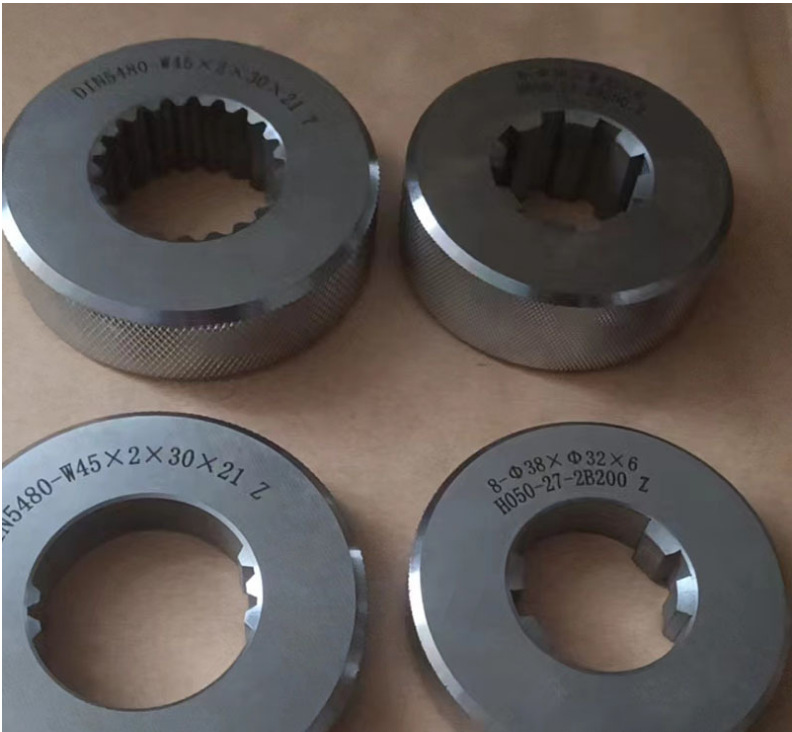אוק . 21, 2024 22:06 Back to list
Standard Specifications for Thread Ring Gauges in Precision Measurement Applications
Understanding Thread Ring Gauge Standards
Thread ring gauges are essential tools used in manufacturing and quality control to ensure the precision of threaded components. These gauges measure the external threads of a screw or bolt, confirming their compliance with specified dimensions and tolerances. As industries rely on high precision for functionality and safety, thread ring gauge standards play a crucial role in ensuring uniformity and reliability in threaded products.
What is a Thread Ring Gauge?
A thread ring gauge is a cylindrical gauge designed to inspect external threads on fasteners like screws and bolts. It has two main types the Go gauge and the No-Go gauge. The Go gauge checks if a thread fits properly, signifying that it is within the specified limits. Conversely, the No-Go gauge ensures that the thread does not exceed maximum limits, indicating that the part is defective if it passes through. This dual function ensures both acceptance and rejection criteria are met, promoting quality in production.
Importance of Standards in Thread Ring Gauges
Standards for thread ring gauges are crucial because they provide uniformity in measurements across different manufacturers and industries. The most recognized standards include those set by the International Organization for Standardization (ISO), the American National Standards Institute (ANSI), and the American Society of Mechanical Engineers (ASME). These organizations outline the specifications for thread dimensions, tolerances, and testing methods.
Using standardized gauges ensures consistency, accuracy, and compatibility of threaded products. When industries adopt these standards, they benefit from reduced errors and improved communication between suppliers and manufacturers, facilitating smoother production processes and minimizing costly rework.
Types of Thread Standards
thread ring gauge standard

Thread standards can vary based on the region and application. For instance, metric threads are widely used in Europe and many other parts of the world, adhering to ISO standards. These threads are defined by their diameter and pitch (distance between threads). On the other hand, Unified National threads (UNC and UNF) are more common in the United States. Each of these threads has specific ring gauge standards that accompany them, dictating their tolerances and fitting characteristics.
The thread form itself is another consideration. The most common types include the triangular profile of ISO and ANSI threads, along with trapezoidal and square threads used for specific applications. Each of these forms has inherent characteristics affecting how they engage with corresponding components, emphasizing the need for precise gauging.
Calibration and Maintenance of Thread Ring Gauges
To maintain accuracy, thread ring gauges must be regularly calibrated and properly maintained. Calibration involves comparing the gauge measurements against a standard reference. It is crucial to ensure that the gauges remain within prescribed tolerances to ensure continued quality assurance.
Proper storage is equally important. Thread gauges should be kept clean and free from moisture to avoid corrosion and wear. Additionally, they should be handled carefully to prevent accidental damage.
Conclusion
In conclusion, thread ring gauge standards are vital for quality assurance in industries that rely on cylindrical fasteners. The structured approach provided by these standards fosters accuracy and consistency across manufacturing processes. As technology and manufacturing processes evolve, so too will the standards for thread ring gauges, requiring industries to stay informed and ensure compliance to maintain quality. The integration of these standards not only promotes precision but also enhances safety, reliability, and customer satisfaction in an increasingly competitive market.
-
Thread Plug Gauge Requires Careful HandlingNewsJul.29,2025
-
Surface plate calibrationNewsJul.29,2025
-
Ring Gauge Ensures Machining AccuracyNewsJul.29,2025
-
Pad Iron Reinforces Anchor PointsNewsJul.29,2025
-
Ground anchor stabilizes embankmentsNewsJul.29,2025
-
Granite Box Maintains Precision FlatnessNewsJul.29,2025
Related PRODUCTS









